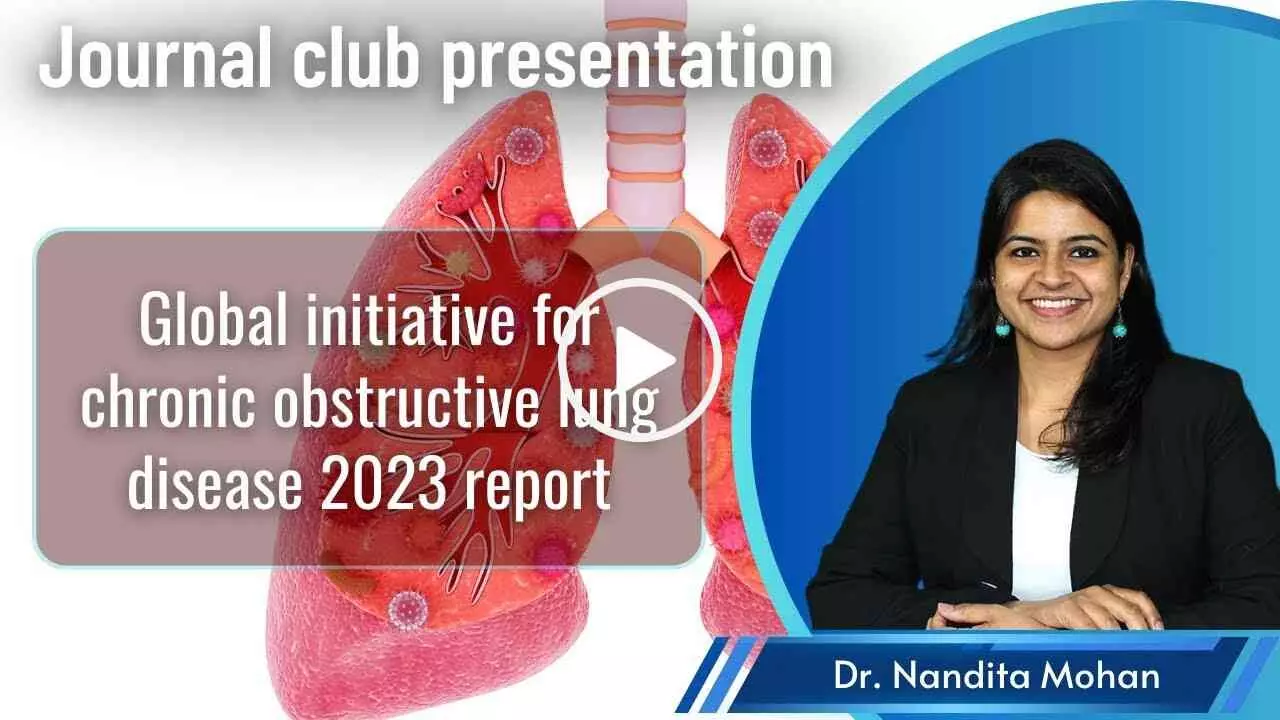Gold Executive Summary of Global Initiative for Chronic Obstructive Lung Disease 2023 Report

Lung diseases have become more prominent since the pandemic
to create more awareness about them. The Global Initiative for Chronic
Obstructive Lung Disease (GOLD) has published the complete 2023 GOLD report. It
contains important changes compared to earlier versions, and incorporates 387
new references.
A study in Journal of The Pan African Thoracic Society
(JPATS) published by Scientific Scholar presents an executive summary of this
GOLD 2023 report that summarizes aspects that are relevant from a
clinician´s perspective and updates evidence published since the prior
executive summary in 2017.
The definition of a disease should only include the
characteristics that distinguish it from other diseases. Accordingly, GOLD 2023
proposes a new definition of COPD that, at variance with previous documents,
focuses exclusively on these characteristics, separately from its epidemiology,
causes, risk factors and diagnostic criteria.
GOLD 2023 defines COPD as a heterogeneous lung
condition characterized by chronic respiratory symptoms (dyspnea, cough,
expectoration and/or exacerbations) due to abnormalities of the
airways (bronchitis, bronchiolitis) and/or
alveoli (emphysema) that cause persistent, often progressive, airflow
obstruction.
Factors like cigarette smoking is a key environmental
risk factor for COPD. Cigarette smokers have a higher prevalence of respiratory
symptoms and lung function abnormalities, a greater COPD mortality rate than
non-smokers; yet fewer than 50% of heavy smokers develop COPD.
Occupational exposures, including organic and inorganic
dusts, chemical agents, and fumes, are an under-appreciated environmental risk
factor for COPD.
Air pollution, which typically consists of particulate matter, ozone, oxides of nitrogen or sulfur, heavy metals, and other greenhouse gases, is a major worldwide cause of COPD, responsible for ~50% of the attributable risk for COPD. Genetic factors like are the most relevant risk factor for COPD identified are mutations in SERPINA1, leading to α-1 antitrypsin deficiency, a major circulating inhibitor of serine proteases.
The lungs grow and mature until about 20-25 years of age (earlier in females), when lung function reaches its peak. This is followed by a relatively short plateau and a final phase of mild lung function decline due to physiological lung aging. Lung diseases are common in both males and females.
Many different studies have reported that asthma and atopy in infancy may be a significant risk factor for COPD in adulthood. Severe lung infections in childhood have been associated with reduced lung function and increased respiratory symptoms in adulthood.
Therefore, it was noted that COPD is a common, preventable, and treatable disease, but extensive under-diagnosis and misdiagnosis leads to patients receiving no treatment or incorrect treatment. The realization that environmental factors other than tobacco smoking can contribute to COPD, that it can start early in life and affect young individuals, and that there are precursor conditions opens new windows of opportunity for its prevention, early diagnosis, and prompt and appropriate therapeutic intervention.
